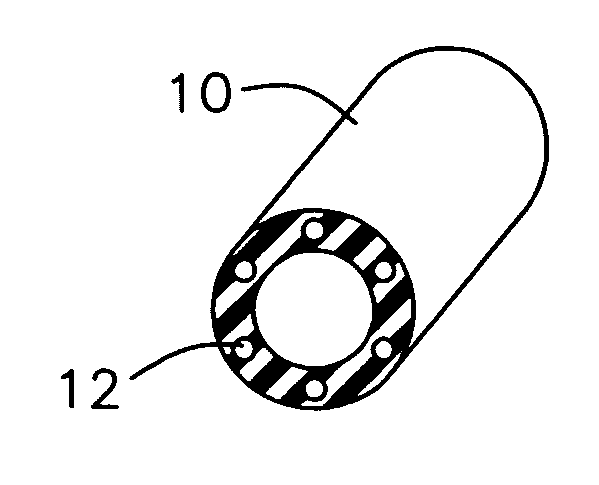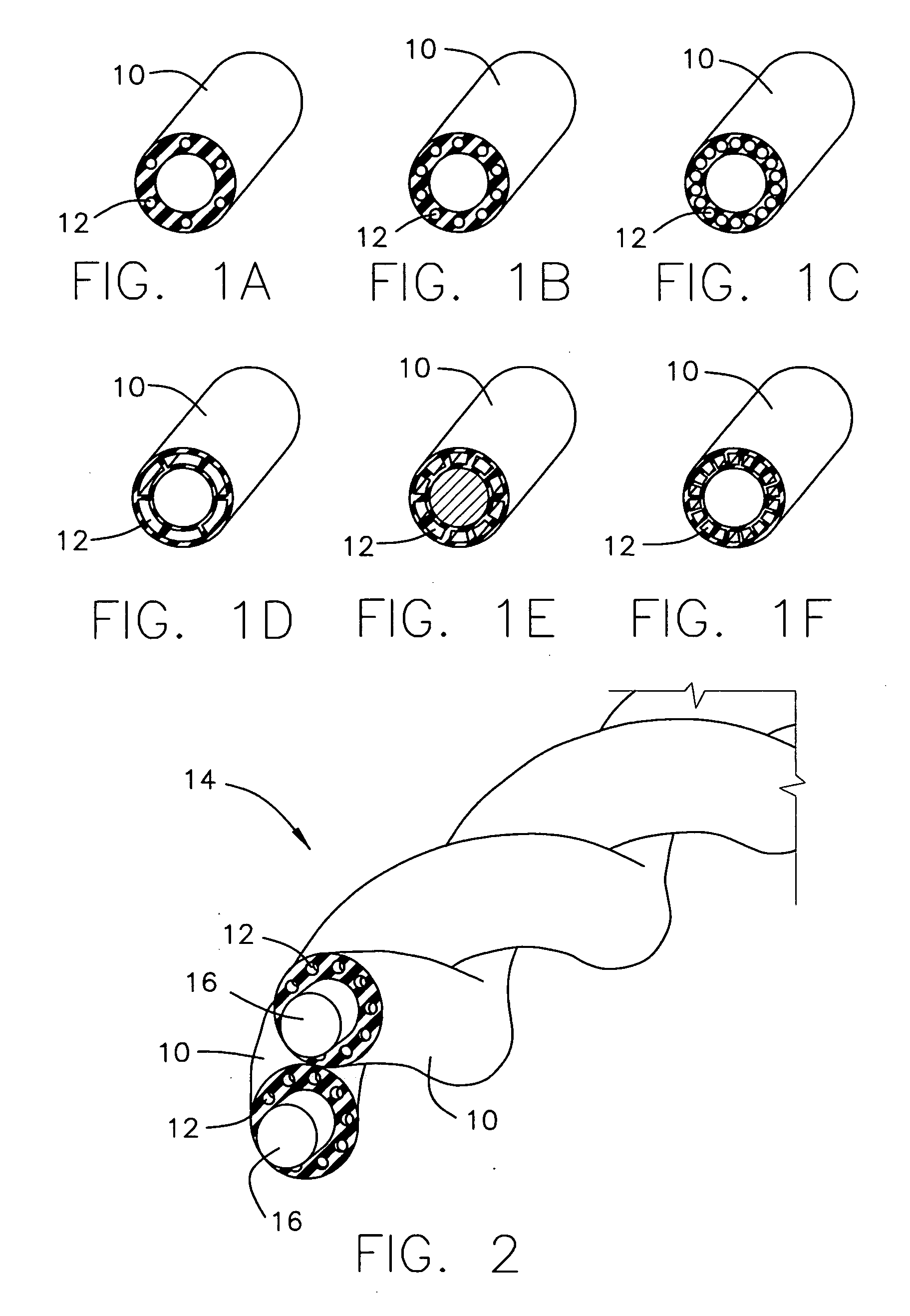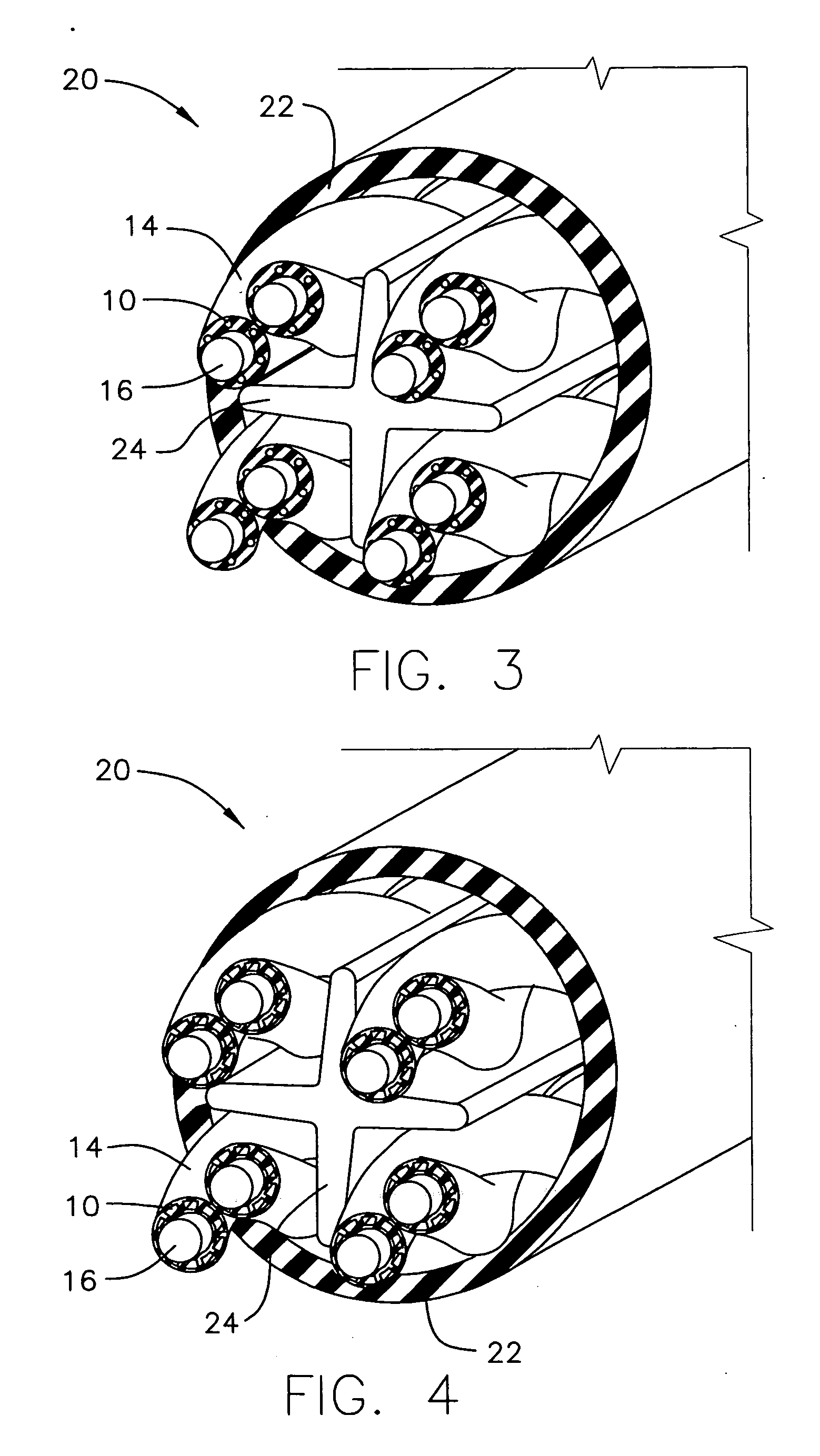Profiled insulation LAN cables
a technology of cable and insulation, applied in the field of insulation in cables, can solve the problems of insertion loss of signals propagated along the cables, several limitations of the foaming process, and no chemical foaming is used
- Summary
- Abstract
- Description
- Claims
- Application Information
AI Technical Summary
Benefits of technology
Problems solved by technology
Method used
Image
Examples
Embodiment Construction
[0023] In one embodiment of the present invention, as illustrated in FIGS. 1A through 1F, a profiled insulation 10 is provided. Profiled insulation generally refers to an insulator, typically for use on a conductor from a twisted pair. Unlike common solid (usually cylindrical) polymer insulation, profiled insulation 10 of the present invention has additional physical characteristics regarding its shape as discussed below.
[0024] Profiled insulation 10 is preferably constructed from a thermoplastic polymer insulation (dielectric), such as FEP (Fluorinated Ethylene-Propylene), however, any suitable polymer may be used according to any one of the desired insulation capabilities, fire resistance properties, mechanical strengths or the desired production rates of profiled insulation 10.
[0025] Each profiled insulation 10 is provided with one or more cavities 12 that extend along the longitudinal axis of insulation 10. Cavities 12 are disposed within the insulation itself and may have a c...
PUM
| Property | Measurement | Unit |
|---|---|---|
| Pressure | aaaaa | aaaaa |
| Volumetric flow rate | aaaaa | aaaaa |
| Volumetric flow rate | aaaaa | aaaaa |
Abstract
Description
Claims
Application Information
 Login to View More
Login to View More - R&D
- Intellectual Property
- Life Sciences
- Materials
- Tech Scout
- Unparalleled Data Quality
- Higher Quality Content
- 60% Fewer Hallucinations
Browse by: Latest US Patents, China's latest patents, Technical Efficacy Thesaurus, Application Domain, Technology Topic, Popular Technical Reports.
© 2025 PatSnap. All rights reserved.Legal|Privacy policy|Modern Slavery Act Transparency Statement|Sitemap|About US| Contact US: help@patsnap.com



